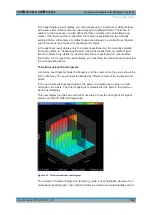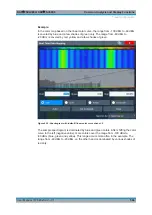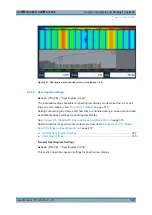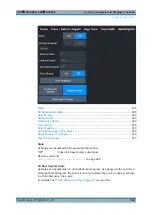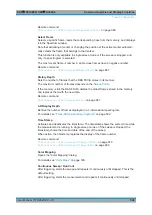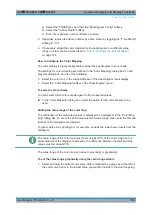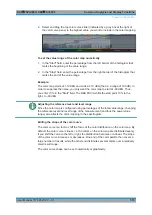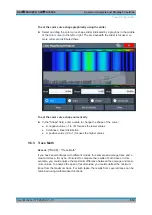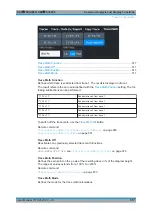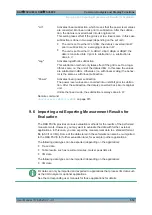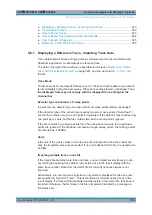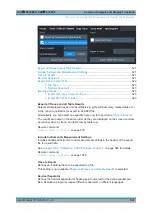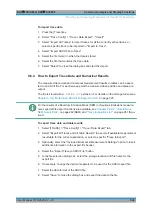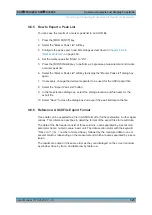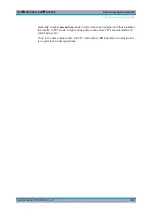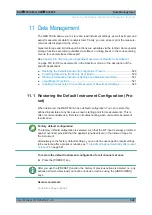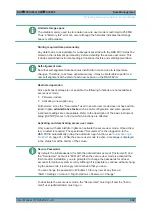
Common Analysis and Display Functions
R&S
®
FSVA3000/ R&S
®
FSV3000
515
User Manual 1178.8520.02 ─ 01
2. Select and drag the top color curve slider (indicated by a gray box at the right of
the color curve pane) to the highest value you want to include in the color mapping.
To set the value range of the color map numerically
1. In the "Start" field, enter the percentage from the left border of the histogram that
marks the beginning of the value range.
2. In the "Stop" field, enter the percentage from the right border of the histogram that
marks the end of the value range.
Example:
The color map starts at -110
dBm and ends at -10
dBm (that is: a range of 100
dB). In
order to suppress the noise, you only want the color map to start at -90
dBm. Thus,
you enter
10%
in the "Start" field. The R&S
FSV/A shifts the start point 10% to the
right, to -90
dBm.
Adjusting the reference level and level range
Since the color map is configured using percentages of the total value range, changing
the reference level and level range of the measurement (and thus the power value
range) also affects the color mapping in the spectrogram.
Editing the shape of the color curve
The color curve is a tool to shift the focus of the color distribution on the color map. By
default, the color curve is linear, i.e. the colors on the color map are distributed evenly.
If you shift the curve to the left or right, the distribution becomes non-linear. The slope
of the color curve increases or decreases. One end of the color palette then covers a
large number of results, while the other end distributes several colors over a relatively
small result range.
The color curve shape can be set numerically or graphically.
Trace Configuration


